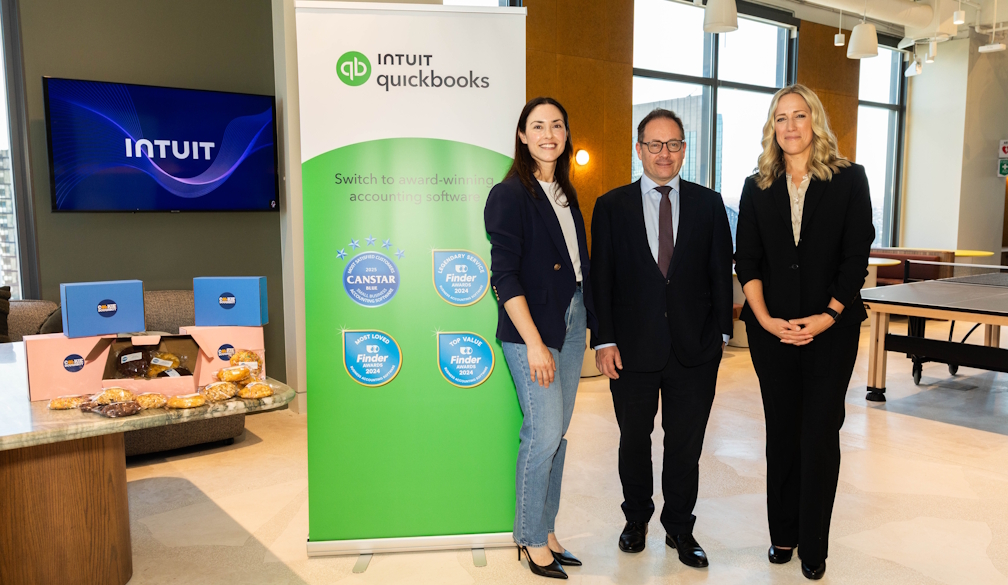Intuit QuickBooks Launches Australia's Most Advanced Open Banking Solution for Financial Management
- Written by The Times

Intuit Australia Pty Limited, subsidiary of Intuit Inc. (NASDAQ: INTU), the global financial technology platform behind Intuit QuickBooks, Mailchimp, TurboTax and Credit Karma, today announced a significant milestone in its mission to build an all-on-one platform with everything businesses and accountants need to compete and grow. As the first financial management software provider to achieve Accredited Data Recipient (ADR) status under the Open Banking initiative, Intuit QuickBooks is now rolling out Australia's most advanced bank feed solution to its customers.
Open Banking introduces powerful benefits that streamline workflows, save time and improve results for businesses and advisors using Intuit QuickBooks. The benefits include:
- Real-Time Data Sync: Banking transactions flow into Intuit QuickBooks instantly, giving SMBs, accountants, and bookkeepers immediate access to accurate and up-to-date financial information, allowing business owners to make timely decisions and enabling accountants and bookkeepers to deliver more effective support.
- Time Efficiency: Ends the need to chase missing transactions or deal with duplicates. The direct feed simplifies reconciliation and frees up hours for higher-value advisory and business growth tasks. Globally, Open Banking saves businesses significant time; for example, NatWest in the UK reported a saving of 150 hours on operational tasks each year.
- Simplified Cash Flow: Centralised, real-time financial data enables precise cash flow tracking and forecasting with precision, enabling smarter decisions and more effective consultations.
- Better Client Insights: Instant access to comprehensive data across a wide range of financial accounts including bank, credit card and loan, along with historical data back to 2017, allows for deeper trend analysis and more informed financial decisions for both businesses and advisors.
- Enhanced Security Standards: With strict accreditation rules and cutting-edge technology-driven safeguards, Open Banking eliminates risky practices like password sharing, giving business owners and accountants confidence in the security of their financial data. It will also eliminate the need for less secure methods of data collection such as screen scraping, as data is transferred via secure, end-to-end encrypted APIs. Users retain full control through granular permissions and must provide explicit approval for every data connection.
- Flexible Data Sharing and Greater Competition: As an ADR, Intuit will allow its customers to securely direct the sharing of their data with any third party they choose. This greater data mobility will stimulate competition and innovation, empowering customers to use their own data to discover better-suited products and services.
- Expanded Bank Connectivity: Over 100 Australian financial institutions can connect to Intuit QuickBooks via Open Banking, significantly reducing gaps in data access and improving overall financial visibility for accountants and business owners.
Suzy Nicoletti, Regional Vice President of Intuit APAC said, “By leveraging the power of Open Banking’s accurate, real-time client financial data, Intuit is creating the essential data foundation for its AI driven expert platform to revolutionise the way businesses and accountants operate. Soon, Intuit QuickBooks will launch agentic AI to automate transaction categorisation and unlock predictive forecasting and smarter budgeting. This empowers businesses and accountants to virtually eliminate manual tasks, gain immediate insights, and deliver strategic advice while retaining full control over data validation.
“Over the past six years, Intuit has worked closely with the Treasury, various regulators like the ACCC and OAIC, as well as industry bodies to shape the infrastructure, policies and innovations needed to make Open Banking a reality. This milestone empowers businesses and advisors to shift their focus from administrative tasks to drive growth and thrive in today’s competitive environment.”
Intuit Australia is the only cloud accounting software provider accredited by the Australian Competition and Consumer Commission (ACCC) as an unrestricted ADR under the Consumer Data Right. Intuit also meets stringent, ongoing compliance obligations that are monitored by the ACCC and the Office of the Australian Information Commissioner, to maintain its accreditation.
Connecting an Open Banking feed to QuickBooks takes minutes and can remain active for 365 days, ensuring real-time, reliable data. Open Banking data feeds will be first available for Commonwealth Bank accounts in QuickBooks, before being expanded to NAB, Westpac, ANZ and 90 other banks across Australia.
For more information about Open Banking and how it can benefit businesses, accountants and bookkeepers, visit https://quickbooks.intuit.com/au/.











